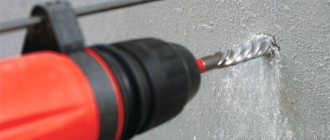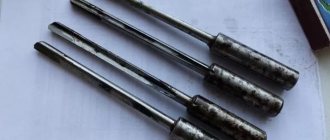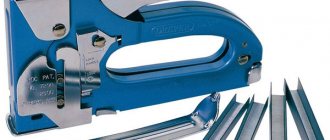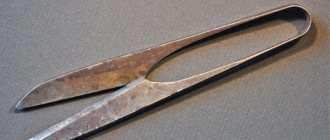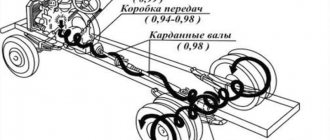Diamond is known to be one of the hardest minerals on earth. That is why the most effective tool for processing materials with high strength is a diamond drill.
There are many types of diamond drills on the modern market, differing in both design and manufacturing technology. For effective operation of diamond drills, it is necessary to take into account their technical parameters, the properties of the material being cut and the capabilities of the equipment used.
Main types
Diamond drills today are produced with various forms of working attachments. So, these could be tools:
- with a cylindrical working part (this includes tubular drills, as well as annular diamond drills);
- with a spherical cutting part;
- conical type;
- with a working part made in the form of a spear or feather.
The most traditional design has tools with a conical cutting part, which in appearance resemble a regular metal drill.
Used primarily for drilling glass, ceramic and tiles, as well as stone products, they are available in a diameter range of 16–85 mm.
The durability of a conical tool (that is, the depth of the hole, after drilling which it is subject to critical wear) is 9–12 meters when working on natural stone and 10–14 meters when making holes in other materials.
Diamond drills do not require constant cooling during processing, and also do not require regular sharpening. To prevent overheating (which is extremely undesirable), it is enough to periodically dip the tool in a container of water during drilling and carry out processing at low speeds.
Production technologies
Today, two main methods of manufacturing diamond drills are used:
- sintering, which involves the use of powder metallurgy methods;
- a technology by which diamond coating is applied to the cutting part of the drill using the galvanic method.
Sintering allows the production of cutting tools that are extremely wear resistant.
The most significant disadvantage of this technology is that it can only be used to produce large-sized tools, such as, for example, diamond annular drills. This is explained as follows.
In order to create a durable product using this technology, it is necessary that the gaps between the diamond grains from which such a product is sintered be small. Then the created material turns out to be more monolithic and, as a result, more durable.
In cases where the cutting part of a small drill is made by sintering, such gaps are comparable in size to the size of the diamond grains themselves, which makes the resulting material very unstable to mechanical loads and causes its intensive destruction.
Vacuum sintered diamond bits designed to be secured through adapters.
Using sputtering technology, which involves the use of galvanic equipment, predominantly tubular diamond drills are produced, as well as tools with a conical cutting part. Using this technology, it is possible to produce miniature diamond-coated drills, even with complex configurations.
The diamond coating created using this technology is characterized by a single-row arrangement of grains, which is why it has rather low durability.
This is especially critical for coatings applied to tool cutting edges. For this reason, a diamond-coated drill, which is produced by the galvanic method, has a short working life, but this disadvantage is compensated by the low cost of such a tool.
Features of use
Each type of diamond drill has certain features that must be taken into account when choosing and using such a tool.
Diamond tools, the cutting part of which is equipped with crowns coated with galvanic coating, are very similar in appearance to conventional core drills. The great advantage of such a tool, in addition to its affordable cost, is also the fact that when using it, little end pressure is exerted on it.
Thanks to this, it can be used for drilling at high speeds, which increases the productivity of the process.
Meanwhile, a core or tubular drill, the cutting part of which is coated with diamond, also has a serious drawback: it has a short service life and allows only a few holes to be made efficiently. That is why tools based on a diamond-coated tube are used primarily for drilling tiles.
As mentioned above, drills, the cutting part of which is made from diamond chips by sintering, are highly reliable and can be successfully used for a long time.
Each of these tools, if all technological recommendations are followed when using them, can drill more than a hundred holes.
However, drills in this category also have disadvantages, the most significant of which is that during the processing process the tool is subjected to significant end pressure, which does not make it possible to use high processing speeds. This drawback causes a significant reduction in drilling performance.
A diamond tool with a cone-shaped cutting surface simultaneously combines the advantages of diamond drills, which belong to the category of tubular-type tools, and annular drills.
As mentioned above, such a tool is very similar in appearance to conventional metal drills, but differs from them in the material of manufacture.
Advanced technologies are used to apply a diamond coating to the working surface of such drills, which makes it possible to create a tool that is highly resistant to wear.
The technology used to process the working part of cutting tools of this type makes it possible to create a coating on it in which the number of diamond grains is increased by 2–2.5 times. This technology does not involve conventional galvanic treatment, but the application of a diamond coating using the vacuum diffusion method.
When using this method, the gaps between the diamond grains are filled with metal, which ensures the highest durability of the coating being formed.
Areas of application
Diamond drills are highly effective in processing materials that conventional drills cannot handle.
The mechanical characteristics of diamond coating make it possible to successfully use such a tool for making holes in materials that are characterized by high strength:
- tiles;
- porcelain stoneware;
- glass;
- concrete;
- brick;
- natural and artificial stone.
Using such a tool (in particular, tubular diamond drills) holes are made in concrete building structures necessary for installing electrical outlets.
In addition, it is this type of tool that drills glass and mirrors, which makes such drills especially relevant in the production of optical devices for various purposes.
Radio electronics, instrument making and mechanical engineering are areas where it is practically impossible to do without the use of diamond drills, which are distinguished by the highest hardness.
Diamond drills are also widely used in everyday use. Using this tool, they drill glass and mirrors, ceramic and tiles, concrete and products made of natural and artificial stone.
In order for such drilling to result in accurate and neat holes, it is necessary to not only choose the right tool, but also strictly follow the technological recommendations.
If you need to use diamond drills, it is best to purchase tools from well-known and trusted manufacturers. This way you not only get a guarantee of a long period of use, but also the confidence that the hole formed with its help will be of high quality.
Diamond drills , tubular, are used for drilling holes in products made of ceramics, glass and other non-metallic materials. The diamond coating is made using the “galvanic” method in two layers.
Features of use
Each type of diamond drill has certain features that must be taken into account when choosing and using such a tool.
Diamond coated crowns
Diamond tools, the cutting part of which is equipped with crowns coated with galvanic coating, are very similar in appearance to conventional core drills. The great advantage of such a tool, in addition to its affordable cost, is also the fact that when using it, little end pressure is exerted on it. Thanks to this, it can be used for drilling at high speeds, which increases the productivity of the process.
Types of diamond bits
Meanwhile, a core or tubular drill, the cutting part of which is coated with diamond, also has a serious drawback: it has a short service life and allows only a few holes to be made efficiently. That is why tools based on a diamond-coated tube are used primarily for drilling tiles.
Drills with cutting elements made of sintered diamond chips
As mentioned above, drills, the cutting part of which is made from diamond chips by sintering, are highly reliable and can be successfully used for a long time. Each of these tools, if all technological recommendations are followed when using them, can drill more than a hundred holes. However, drills in this category also have disadvantages, the most significant of which is that during the processing process the tool is subjected to significant end pressure, which does not make it possible to use high processing speeds. This drawback causes a significant reduction in drilling performance.
Tubular drill bit "Zubr-Professional" with diamonds on vacuum soldering
Cone type diamond drill bits
A diamond tool with a cone-shaped cutting surface simultaneously combines the advantages of diamond drills, which belong to the category of tubular-type tools, and annular drills. As mentioned above, such a tool is very similar in appearance to conventional metal drills, but differs from them in the material of manufacture. Advanced technologies are used to apply a diamond coating to the working surface of such drills, which makes it possible to create a tool that is highly resistant to wear.
The technology used to process the working part of cutting tools of this type makes it possible to create a coating on it in which the number of diamond grains is increased by 2–2.5 times. This technology does not involve conventional galvanic treatment, but the application of a diamond coating using the vacuum diffusion method. When using this method, the gaps between the diamond grains are filled with metal, which ensures the highest durability of the coating being formed.
Diamond drills - types, features, application
Diamond is known to be one of the hardest minerals on earth. That is why the most effective tool for processing materials with high strength is a diamond drill. In this article, a master
plumber
will tell you about the types of diamond drill bits.
Diamond drills today are produced with various forms of working attachments. So, these could be tools:
- With a cylindrical working part (this includes tubular drills, as well as annular diamond drills);
- With a spherical cutting part;
- Conical type;
- With a working part made in the form of a spear or feather.
The most traditional design has tools with a conical cutting part, which in appearance resemble a regular metal drill.
Used primarily for drilling glass, ceramic and tiles
, as well as stone products, they are produced in the diameter range of 16–85 mm.
The durability of a conical tool (that is, the depth of the hole, after drilling which it is subject to critical wear) is 9–12 meters when working on natural stone and 10–14 meters when making holes in other materials.
Diamond drills do not require constant cooling during processing, and also do not require regular sharpening
. To prevent overheating (which is extremely undesirable), it is enough to periodically dip the tool in a container of water during drilling and carry out processing at low speeds.
| Modes of operation with diamond drills |
Production technologies
Today, two main methods of manufacturing diamond drills are used:
- Sintering, which involves the use of powder metallurgy methods;
- A technology by which diamond coating is applied to the cutting part of the drill using the galvanic method.
Sintering allows the production of cutting tools that are extremely wear resistant.
The most significant disadvantage of this technology is that it can only be used to produce large-sized tools, such as, for example, diamond annular drills. This is explained as follows.
In order to create a durable product using this technology, it is necessary that the gaps between the diamond grains from which such a product is sintered be small. Then the created material turns out to be more monolithic and, as a result, more durable.
In cases where the cutting part of a small drill is made by sintering, such gaps are comparable in size to the size of the diamond grains themselves, which makes the resulting material very unstable to mechanical loads and causes its intensive destruction.
Production technologies
Today, two main methods of manufacturing diamond drills are used:
- sintering, which involves the use of powder metallurgy methods;
- a technology by which diamond coating is applied to the cutting part of the drill using the galvanic method.
Sintering allows the production of cutting tools that are extremely wear resistant. The most significant disadvantage of this technology is that it can only be used to produce large-sized tools, such as, for example, diamond annular drills. This is explained as follows. In order to create a durable product using this technology, it is necessary that the gaps between the diamond grains from which such a product is sintered be small. Then the created material turns out to be more monolithic and, as a result, more durable. In cases where the cutting part of a small drill is made by sintering, such gaps are comparable in size to the size of the diamond grains themselves, which makes the resulting material very unstable to mechanical loads and causes its intensive destruction.
Vacuum sintered diamond bits designed for clamping through adapters
Using sputtering technology, which involves the use of galvanic equipment, predominantly tubular diamond drills are produced, as well as tools with a conical cutting part. Using this technology, it is possible to produce miniature diamond-coated drills, even with complex configurations.
The diamond coating created using this technology is characterized by a single-row arrangement of grains, which is why it has rather low durability. This is especially critical for coatings applied to tool cutting edges. For this reason, a diamond-coated drill, which is produced by the galvanic method, has a short working life, but this disadvantage is compensated by the low cost of such a tool.
Inexpensive galvanized drill bits for dry drilling
Diamond drills for concrete - how to use correctly?
When carrying out renovations in premises, it is necessary to make holes for fastening objects in concrete or brick walls. Diamond concrete drills are used for this type of process.
Compared to metal drills, which quickly become dull, drilling with a diamond tool ensures a directed transfer of impact energy, maximizing the removal of slurry due to the spiral shape.
Characteristics of drills for concrete
A diamond-coated drill, or a diamond tubular drill, is a cylinder with 2 through passages on the sides to remove contaminants.
The main advantages of an electric drill include the equipment with strong alloys for soldering on top of the cutting element. The hardness of boron is as close as possible to the hardness characteristics of diamond. This alloy is called "win".
This type of drill is the most durable of all existing ones. Diamond bits are divided into 2 types:
- Designed for drills, available in polyhedron and cylinder shapes.
- Used for hammer drills with a cylindrical shank and marked SDS-plus, SDS-max.
There are products designed to work with a drill. More powerful products - crowns - are suitable for a hammer drill.
Features of use
When performing installation and using a drill, craftsmen obtain recesses ranging in size from 4 mm to 3 cm due to its versatility. Place the drill into the apparatus by pressing on the nozzle and pushing in the chuck, which is thickened at the end.
If the builder needs to achieve a recess in the wall up to 12 cm in diameter, they use another type of nozzle - a crown type. It is divided into subspecies: diamond and victorious.
The first one has a diamond coating, and the second one has small teeth made of pobedite.
If there is a need to drill passages for attaching sockets or switches, or a large number of wires, then use drills with a core drill. At the same time, it is imperative to know exactly the depth and diameter that you need to obtain in order to select the right tool. When choosing a suitable drill, they rely on the main feature - the larger the diameter needed, the longer the length.
Crowns are often used to create holes in a wall to accommodate an outlet.
How to use the device?
Electrochemical coating of one metal with another, which is more resistant to mechanical movement and chemical processes, allows you to select the appropriate drill diameter and type for different processes. You also need to make sure that the nozzle does not overheat. The cooling device should be stopped at regular intervals.
It is unacceptable to water the working parts with cold water. If, during drilling, an obstacle is discovered in the thickness of the concrete layer, you should change the drill used to cut metal. Having passed this section, insert the previous one again. For load-bearing walls it is better to use a hammer drill.
The power of this device will guarantee the required quality of the desired holes.
Types and characteristics of diamond drills
A diamond drill is a type of reliable and durable cutting tool used for drilling, reaming and making holes in brittle and high-strength materials.
The working part of the product consists of diamond grains of varying degrees of granularity, fixed with a binder to the body. Manufacturers from different countries produce diamond drills that differ in area of use, manufacturing technology and design.
Construction, machine- and instrument-making industry, radio electronics, agriculture – this is not a complete list of industries where it is impossible to do without their use, not to mention household work.
This tool is suitable for ferrous and non-ferrous metals, porcelain stoneware, stone, ceramic tiles, brick, concrete and other metallic and non-metallic materials in which it is difficult to drill holes or even impossible to do this with the help of other cutting tools.
Types of Diamond Drills
The tool is classified according to the following criteria:
- manufacturing method;
- the shape of the working part;
- the material with which he can work;
- diameter;
- designs;
- cutting method.
Electroplating and sintering are the main methods for making diamond drill bits. The first method, i.e., spraying, produces products with a cutting part of a conical type and a tubular shape of a complex configuration of any diameter.
Their resistance to wear is lower than that of cutting tools made by sintering.
In the second method, the product is manufactured using powder metallurgy, which has one drawback - the impossibility of manufacturing small-diameter tools due to the technological complexity of the process.
The shape of the working surface can be of the following types:
- spear-shaped or feather-shaped;
- conical;
- spherical;
- cylindrical.
A product with a cylindrical working part can be tubular or ring-shaped.
The tubular diamond drill has a cylindrical body made of high-quality steel (high-speed, carbon, high-alloy), and its end is sprayed with powder of different fractions.
Such instruments with glass and ceramics work with cooling: a special liquid (coolant) or water is supplied to the working part.
Diamond core drill comes in different types. Diamond chips or powder can be applied in a continuous layer to a certain height or on segments located along the circumference with a certain pitch. There can be up to 14 of them. Drills of this type are produced with a diameter of 32 to 350 mm with a diamond layer height of up to 10 mm.
Manufacturers produce drills that can work with many materials (universal) or for a specific type. Diamond drills for metal, marble, glass, porcelain stoneware, etc. are available in the retail chain.
Therefore, when selecting a product, you need to know what material it will work in, and you need to pay attention to this feature, as well as what it will be used to rotate with and at what speed.
For rotation, use a drill, screwdriver, electric screwdriver or machines that have an appropriately shaped chuck for securing them.
The rotation speed depends on the diameter of the drill used and the material in which the operation is performed. Approximate data is shown in the table.
Diameter, mm Rotation speed, rpm
| 100÷350 | 200÷500 |
| 50÷100 | 500÷1200 |
| 25÷50 | 1200÷2500 |
| 15÷25 | 2000÷4500 |
| 8÷15 | 2500÷6000 |
| 3÷8 | 3000÷12000 |
| 1÷3 | 6000÷18000 |
Characteristics of diamond-coated drills
Diamond drills for metal and other materials are characterized by the following parameters:
- diameter of the cutting part, mm;
- length of the working part, mm;
- product length, mm;
- shape of the working surface;
- number of segments, if any;
- shank type;
- cutting method (dry or wet).
Main advantages
The main advantages of diamond cutting drills include not only the quality of the holes produced with their help in different materials, reusability, but also the possibility of using a large number of tools to work with them. Most often, especially in everyday life, diamond drills with a conical cutting part are used. They are used to cut tiles, ceramics, glass, and stone.
Features of use
The main thing when working with diamond drills is to prevent them from overheating. Therefore, it is recommended that when performing a drilling operation, perform it at minimum speed and periodically dip it in water. There are recommendations for using tools with one or another surface shape.
For example, drilling holes in ceramics and glass must be done using a tool of tubular design. It is also necessary to carry out the drilling process correctly. It begins by setting the drill at a right angle. Work must be carried out without impact.
It is recommended to use specially designed devices or jigs to facilitate the centering process.



